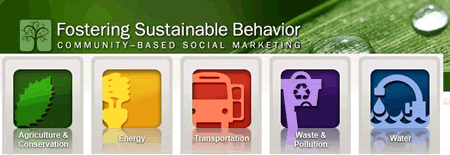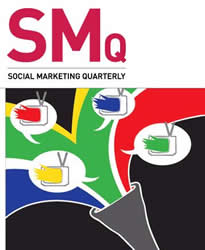SOCIAL ISSUES MARKETING
 Defining the Terms
Defining the Terms
Social Marketing, also sometimes called Health Marketing or Behavior Change Communication, came about from applying general marketing theories or concepts to health and social issues. Instead of marketing products or services, the campaign markets health and social behavior/lifestyle. For this reason, social marketing theory has been studied in health and social sectors.
Alan Andreasen, one of the leading thinkers on Social Issues Marketing, defines the practice this way in his book Marketing Social Change: Changing Behavior to Promote Health, Social Development and the Environment:
 "1. The ultimate objective of social marketing is to benefit target individuals or society
and not the marketer. This distinguishes it from commercial marketing but makes it
similar to nonprofit marketing. It differs from the latter, however, in that it is precisely
focused on directly improving welfare. Thus, when we are talking about social marketing,
we are not talking about fundraising, lobbying (except removing restrictions on social marketing),
or the election of political candidates.
"1. The ultimate objective of social marketing is to benefit target individuals or society
and not the marketer. This distinguishes it from commercial marketing but makes it
similar to nonprofit marketing. It differs from the latter, however, in that it is precisely
focused on directly improving welfare. Thus, when we are talking about social marketing,
we are not talking about fundraising, lobbying (except removing restrictions on social marketing),
or the election of political candidates.
2. The basic means of achieving improved welfare is through influencing behavior, in most cases bringing about a change in behavior. Social marketers are in the behavior business.... Influencing behavior is the bottom line in socal settings just as much as it is in private settings. Kellog will measure its marketing success in Japan on the basis of sales and market share, both behavioral measures. Similarly, social change agents in Egypt will measure the success of oral rehydration programs in terms of the 'market share' of episodes of diarrhea that are treated with oral rehydration solutions of some kind. While often very long in coming, behavioral change is central. All other measures of success are only interim measures that offer encouragement on the path toward the ultimate bottom line.
3. The target audience has the primary role in the social marketing process. First-rate social marketing is always totally centered on the target customer. And 'customer' is the best word to use; although 'client' and 'target audience member' can be used more or less interchangeably with it, they are not as effective in calling attention to the active role the target person plays in the process. After all, there is no behavioral influence until the person to be influenced takes an action, and in social marketing this involves something just as concrete as buying an airplane ticket or a soft drink. The best social marketers realize instinctively that the 'customer' holds the key to success. It is the customer who must ultimately undertake the action the marketer is promoting. And so everything a good social marketer does starts with the customer's perspective. As we shall see, this makes all the difference between programs that ought to work and programs that really do.!"
The fundamental principles that differentiate social issues marketing from any other marketing discipline
are called the Four P's as shown here. On this site, we have tried to assemble the best practices being
employed by individuals and organizations using these four basic principles.
Another leading thinker in the field is Nedra Weinreich, the author of Hands-On Social Marketing-a Step-by-Step Guide. Nedra provides the theory behind the field and what makes it unique from other forms of marketing.
In her book she offers very practical guidance on how to develop social marketing
plans and worksheets to help work through the process. On her website at
Spare Change
you will
find past blogs, and other useful information. She also provides a series of webinars at
Social Marketing University.
No professional field would be complete without a journal. Serving the Social Issues Marketing profession is
the Social Marketing Quarterly, a scholarly, international journal covering theoretical,
research and practical issues confronting social marketers. As the only journal exclusively focused on
social marketing issues, SMQ targets public health communication, marketing,
and social science professionals.
 It consists of research and case studies, conference notices,
essays, editorials, book reviews, and other relevant news regarding social marketing efforts around the
world. This comprehensive approach makes it an invaluable resource for practitioners, academicians, program
developers and administrators. To subscribe send an email to
It consists of research and case studies, conference notices,
essays, editorials, book reviews, and other relevant news regarding social marketing efforts around the
world. This comprehensive approach makes it an invaluable resource for practitioners, academicians, program
developers and administrators. To subscribe send an email to
smq@aed.org.
With the rising popularity of social media, that term often gets confused with social marketing, but they are completely different as our Resources section indicates.
Searching on Allied Fields
Three closely related sectors are Health Communication, Risk Communication, and Environmental Communication. These topics are similar in that they apply basic mass communication theory to connect with patients/clients about their health, health condition, their responsibilities, their behavioral and environmental risks.
Updated 12/19